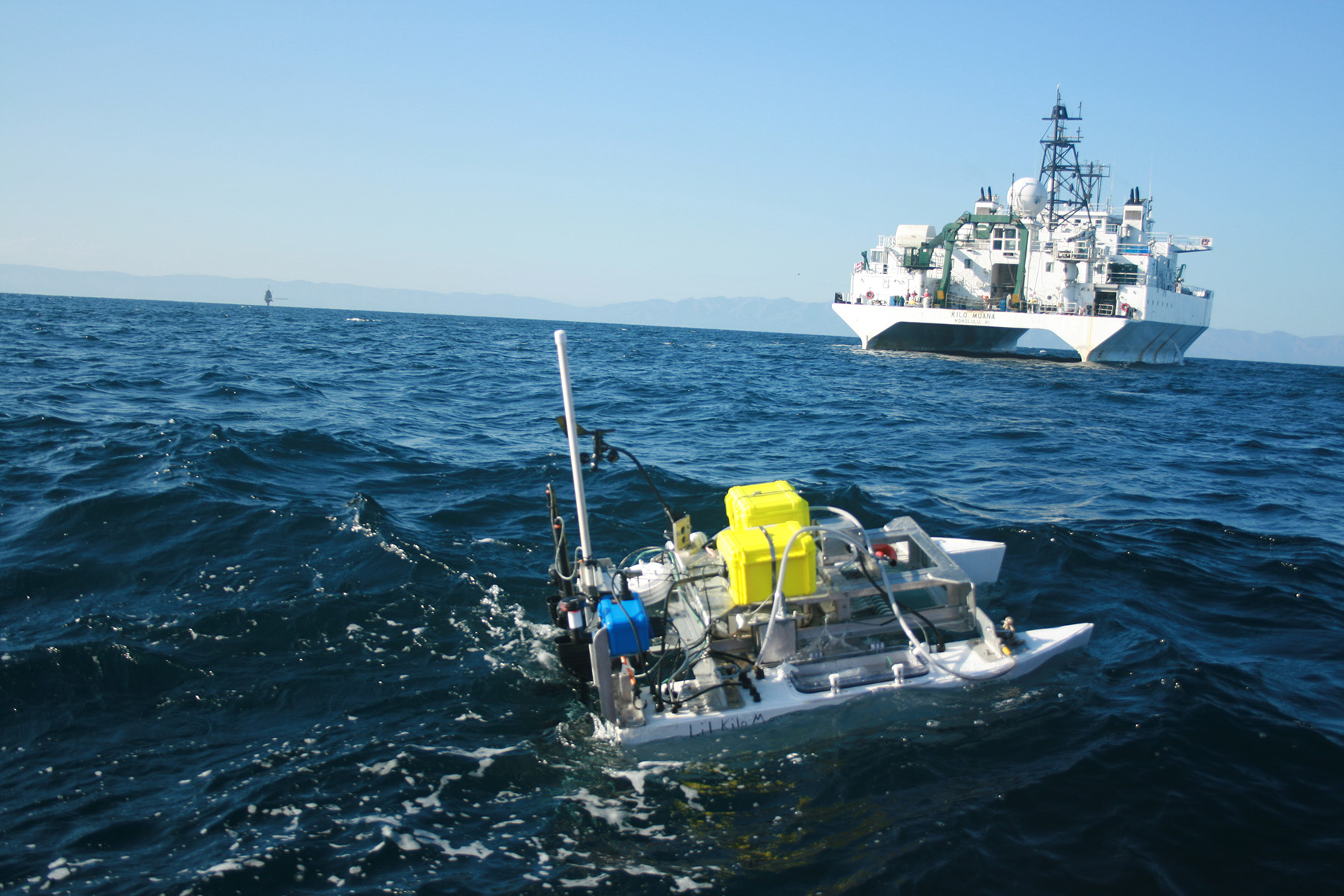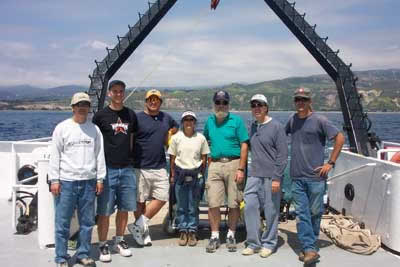In 2008, UCSB Geography Professor Tommy Dickey became one of just 12 ocean scientists to be appointed as a Secretary of the Navy/Chief of Naval Operations Chair of Oceanographic Sciences since the inception of the program in 1984 when the Secretary of the Navy and the Chief of Naval Operations developed a program to reinvigorate Naval oceanography. This program included the creation of SECNAV/CNO “Chairs” in Oceanography in order to recognize distinguished academic ocean scientists and facilitate interactions between the academic community and the operating fleet. Recipients of Chair awards are internationally known leaders with collaborations across many science areas and sponsoring agencies. The Chairs are awarded to two oceanographers every 4 years (see the July 31, 2008 Geography News article for more about Dickey’s appointment).
Professor Dickey was funded by the Office of Naval Research for the Radiance in a Dynamic Ocean (RaDyO) program, a 5-yr project that was initiated in 2005. The overall goals of RaDyO were 1) to understand and predict radiance distributions in relation to dynamic surface boundary layers (SBLs), 2) to develop radiance-based SBL models, 3) to validate these models with field observations, and 4) to investigate the feasibility of inverting these models to retrieve SBL conditions. The fundamental problem is image propagation through a disturbed interface.
UCSB was well represented in the RaDyO project with Dickey serving as the lead investigator; other UCSB scientists working on the project included Leila Carvalho, Grace Chang, Songnian Jiang, Charles Jones, Derek Manov, Dave Siegel, Frank Spada, and Libe Washburn. The RaDyO project is drawing to a close, and the results and conclusions have been published in a special section of the Journal of Geophysical Research – Oceans (Dickey, T. D., et al. [2012], Recent Advances in the Study of Optical Variability in the Near-surface and Upper Ocean, J. Geophys. Res., doi: 10.1029/2012JC007964).
In his introduction to the publication, Dickey notes: “Optical variability occurs in the near-surface and upper ocean on very short time and space scales (e.g., milliseconds and millimeters and less) as well as greater scales. This variability is caused by solar, meteorological, and other physical forcing as well as biological and chemical processes that affect optical properties and their distributions, which in turn control the propagation of light across the air-sea interface and within the upper ocean. Recent developments in several technologies and modeling capabilities have enabled the investigation of a variety of fundamental and applied problems related to upper ocean physics, chemistry, and light propagation and utilization in the dynamic near-surface ocean. The purpose here is to provide background for and an introduction to a collection of papers devoted to new technologies and observational results as well as model simulations, which are facilitating new insights into optical variability and light propagation in the ocean as they are affected by changing atmospheric and oceanic conditions.
The paper was selected as a Research Spotlight in the Transactions of the American Geophysical Union (EOS), and the citation reads: “Understanding precisely how light propagates across the air-sea interface and the factors that control this propagation are essential for several studies associated with the upper ocean. For example, estimates of organic activity are based on the amount of chlorophyll present, the number and types of organisms in the upper ocean, and measurements of the number of bubbles in breaking waves (a key factor that controls air-sea gas exchange).
Optical properties of the surface and upper ocean are among the few tools available to scientists interested in understanding physical and chemical processes in the ocean. However, optical properties of the upper ocean vary within milliseconds and over millimeters as well as at longer time and space scales. This is because several factors affect the optical properties of the ocean, ranging from season, cloud cover, fog, aerosols, and wind to ocean turbulence and the organisms and chemicals present in the upper ocean.
Over several years, scientists have developed technologies and modeling methods to measure optical properties of the upper ocean. In a review paper, Dickey et al., summarize some new technologies and modeling methods that utilize propagation of light in the near-surface ocean. The authors introduce three studies conducted recently in San Diego, the Santa Barbara Channel, and south of Hawaii; each study covers a wide range of ocean conditions. The new studies provide better insights into how changing atmospheric and oceanic conditions affect optical variability and light propagation in the ocean. Scientists can now use improved methods to investigate a variety of fundamental and applied problems related to upper ocean physics, chemistry, and light propagation” (Bhattacharya, A. [2012], New technologies measuring optics of the upper ocean, Eos Trans. AGU, 93(34), 336, doi:10.1029/2012EO340012).

 (2).jpg)





